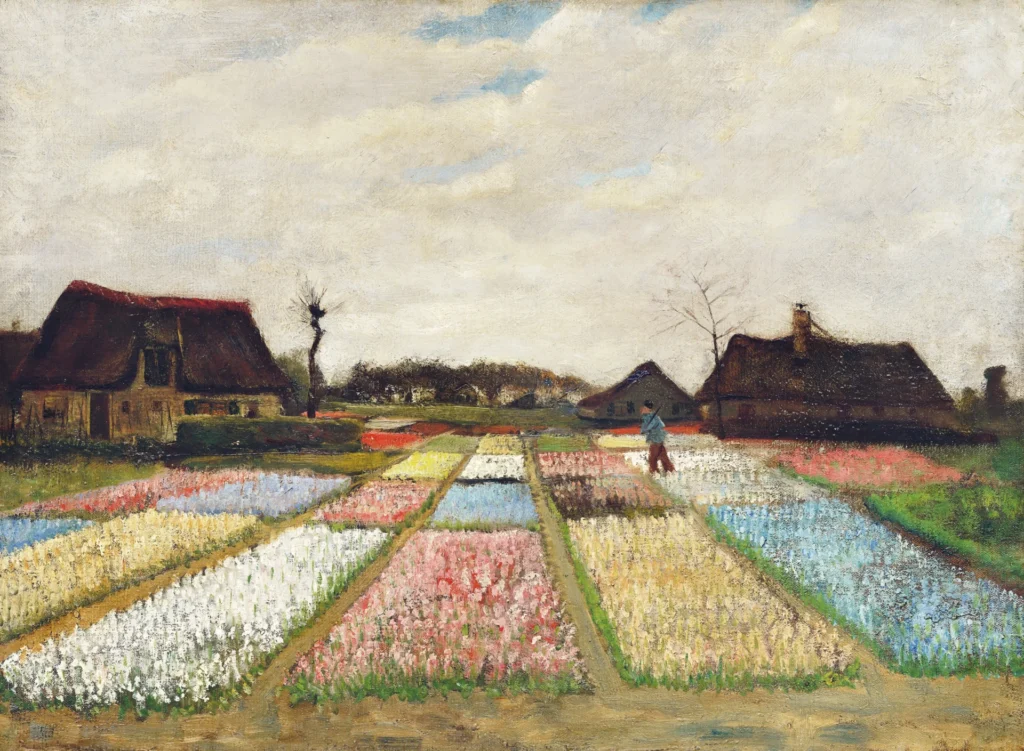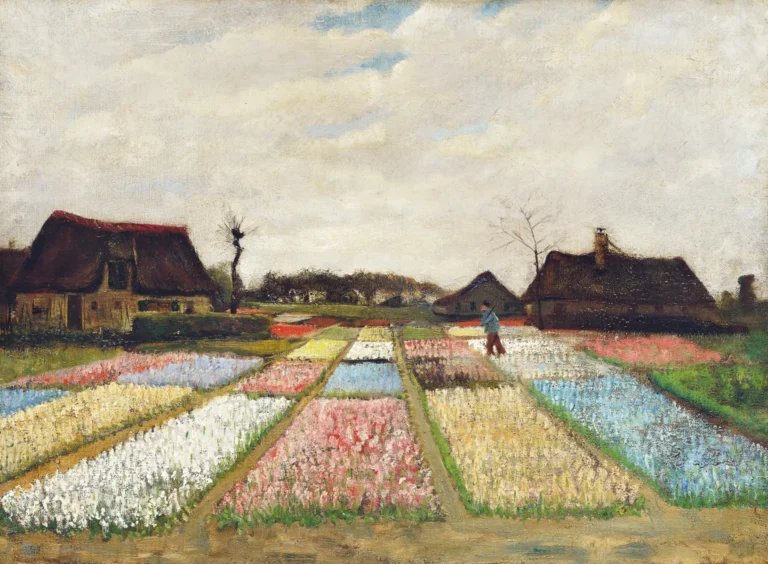Flower Beds In Holland (1883)
Vincent van Gogh's Flower Beds in Holland also known as Bulb Fields created in early 1883, showcases his fascination with color and form. The painting features dazzling plots of blue, yellow, pink, and red hyacinths beneath a panoramic Dutch sky, complemented by rustic cottages and bare trees. With dimensions of 48.9 cm × 66 cm, this vibrant piece demonstrates Van Gogh's exploration of perspective and light, making it an essential work in his oeuvre and a cherished part of the National Gallery of Art's collection.
Year 1883
About the Artwork
Van Gogh created Flower Beds in Holland during a transformative period in his artistic journey, marked by intense emotion and innovative techniques. This artwork was left in his family's care before it journeyed through multiple owners, including a carpenter who mistook it for worthless rubbish. Surprisingly, it found new life at a Rotterdam exhibition, where it was mistakenly labeled as 'Tulpenland.' Over the decades, the painting changed hands several times until it was ultimately acquired by collector Paul Mellon. Upon his death, he generously donated it to the National Gallery of Art, ensuring its preservation for future generations and elevating its status as a significant piece of Post-Impressionist art.
Did You Know
Despite the painting prominently featuring hyacinths, it was mistakenly exhibited under the title ‘Tulpenland’ in 1902 in Rotterdam, showcasing how even experts can sometimes overlook details.
After Van Gogh’s death, Flower Beds in Holland changed hands multiple times, once being misclassified amongst items deemed rubbish, highlighting the unpredictable value of art across time.
In 1983, the painting was donated to the National Gallery of Art in Washington D.C. by Paul Mellon, ensuring its preservation and accessibility for public admiration, solidifying its status in art history.










